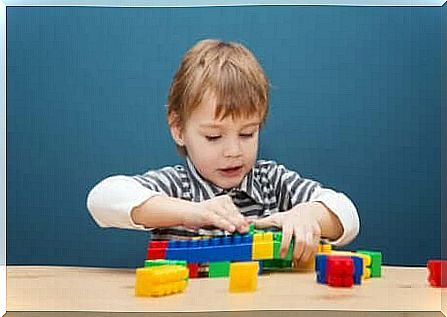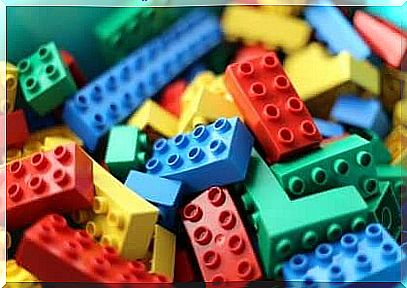Construction Games, New Therapeutic Resource

Legos and other construction games have earned a place of excellence in psychological therapy for adults and within many corporate coaching interventions.
What started out as a game for children has finally turned out to be a powerful tool for working with adults as well. When you think with your hands, emotional intelligence is also activated (for example by testing tolerance for frustration), visual and kinesthetic intelligence.
This allows us to capture countless information about an individual’s personality, his emotions, his tolerance to frustration and his problem solving ability. Precisely for this reason construction games are increasingly present in individual and group psychotherapy.
It is a path that helps develop emotional intelligence, creativity, empathy and other skills. We discover in this article the therapeutic function of construction games.
Construction play therapy
The classic model of speech-based psychological intervention is undoubtedly the most used. In recent years, however, psychological therapy has evolved to open up to expressive forms of intervention, such as play therapy or art therapy.
These therapeutic approaches aim to have the client explore deeper perspectives. In fact, play therapies are particularly effective for discovering the contents of one’s unconscious.
For example, the various Lego facilitation methods involve a highly structured clinical process. We refer to the Lego Serio Play (LSP), initially used in business organizations, the Six Bricks and the Play Box, used for development and learning in children. Furthermore, both have been applied in education, in supporting families in difficulty and in the field of mental health.
Particularly interesting is the reading of the book The Cult of LEGO (Baichtal & Meno, 2011). The work describes Lego-based social development therapy developed at the New Jersey Center for Neurological and Neurological Developmental Health.

Application
Psychologists Harn and Hsiao apply LSP therapy to support people who have survived violent events in order to rebuild their trust in others. They are authors of a report on the application of LSP therapy with the aim of reducing stress in the workplace.
This therapy combines the Lego constructions with the therapist’s questions. By doing so, the patient doesn’t just share personal information, but follows a narrative. On the other hand, the Six Bricks model proved effective for promoting language, cooperation and emotional management skills.
Both approaches are based on the appearance of positive emotions related to the act of building and expanding. They support the development of new skills and resources, finally they help to counteract negative emotions.
According to psychologist Barbara Fredickson, ” playing” is the fastest way to achieve positive emotions. Play is the pattern that individuals use to build.
The emotional change produced through creativity and enjoyment helps patients restructure their life story and perceive their own abilities.
Colored bricks can symbolize obstacles or limitations to your ideas. Using them to build favors the conversion of thought. In this sense, the Six Bricks challenges are simple, yet challenging.
Treat depression
Patients diagnosed with major depressive disorder very often have obvious limitations in oral expression. Through the therapy with construction games, they are able to better express their emotions.
If the therapy is group therapy, the patient has the opportunity to connect with other members in a context of positive social interaction. The method ultimately resorts to emotional regulation and cognitive restructuring.

Research on construction games
Construction games have been the subject of several research studies in recent years. In 2011, cognitive psychologist David Whitebread thoroughly investigated the relationship between these games and language and self-regulation.
Another ongoing study, led by Miles Richarson of the University of Derby, looks at how construction games help predict the mathematical and spatial abilities of the subjects studied.
In the study titled The “IKEA Effect”: When Labor Leads to Lovee , the team led by Michael Norton explains the counterintuitive notion that having to strive to create an object increases the willingness to pay for it.
Consumers place disproportionately high value on products they have helped create or manufacture. This develops a positive effect and emotional attachment to the built product that allows individuals to consider themselves “competent”.









